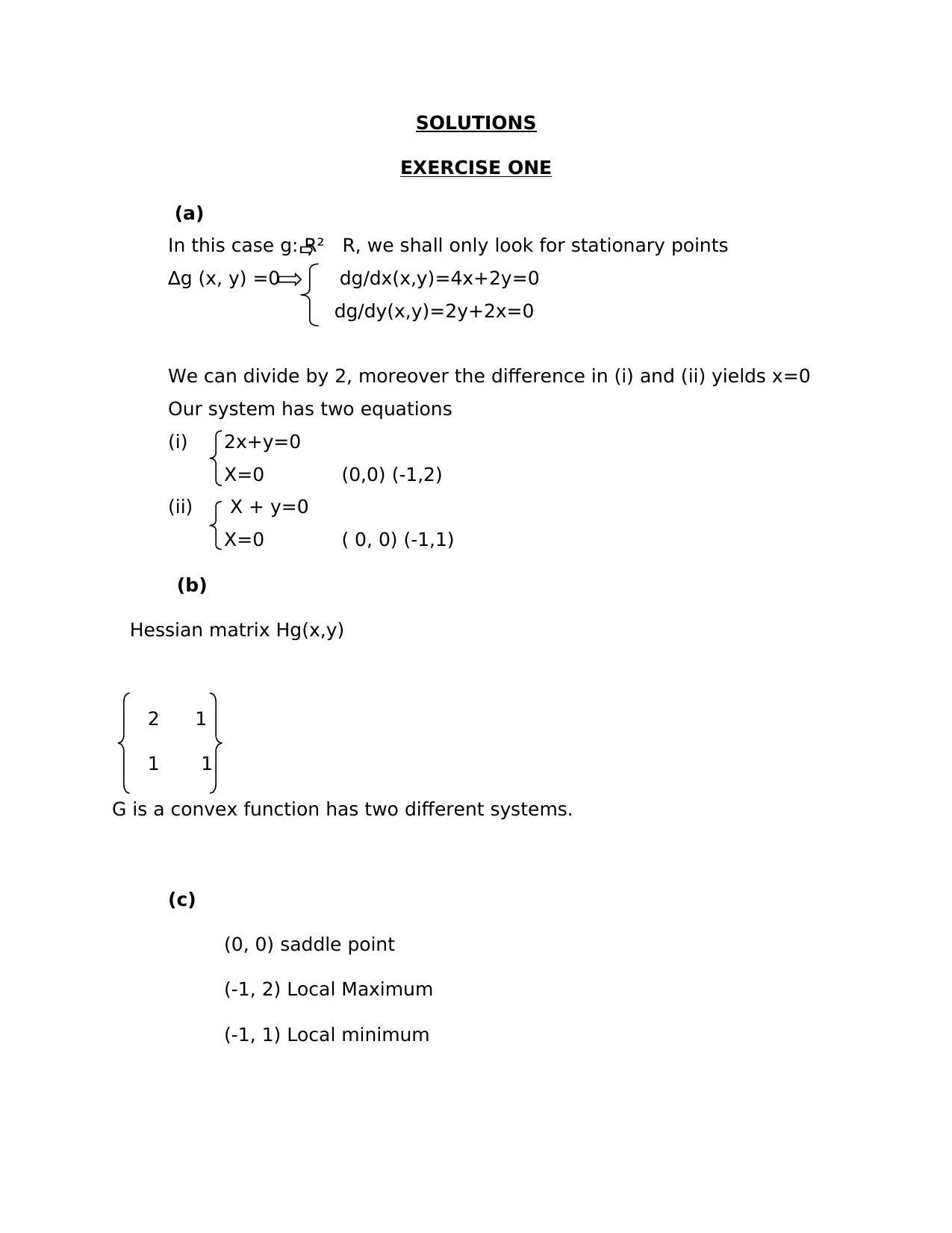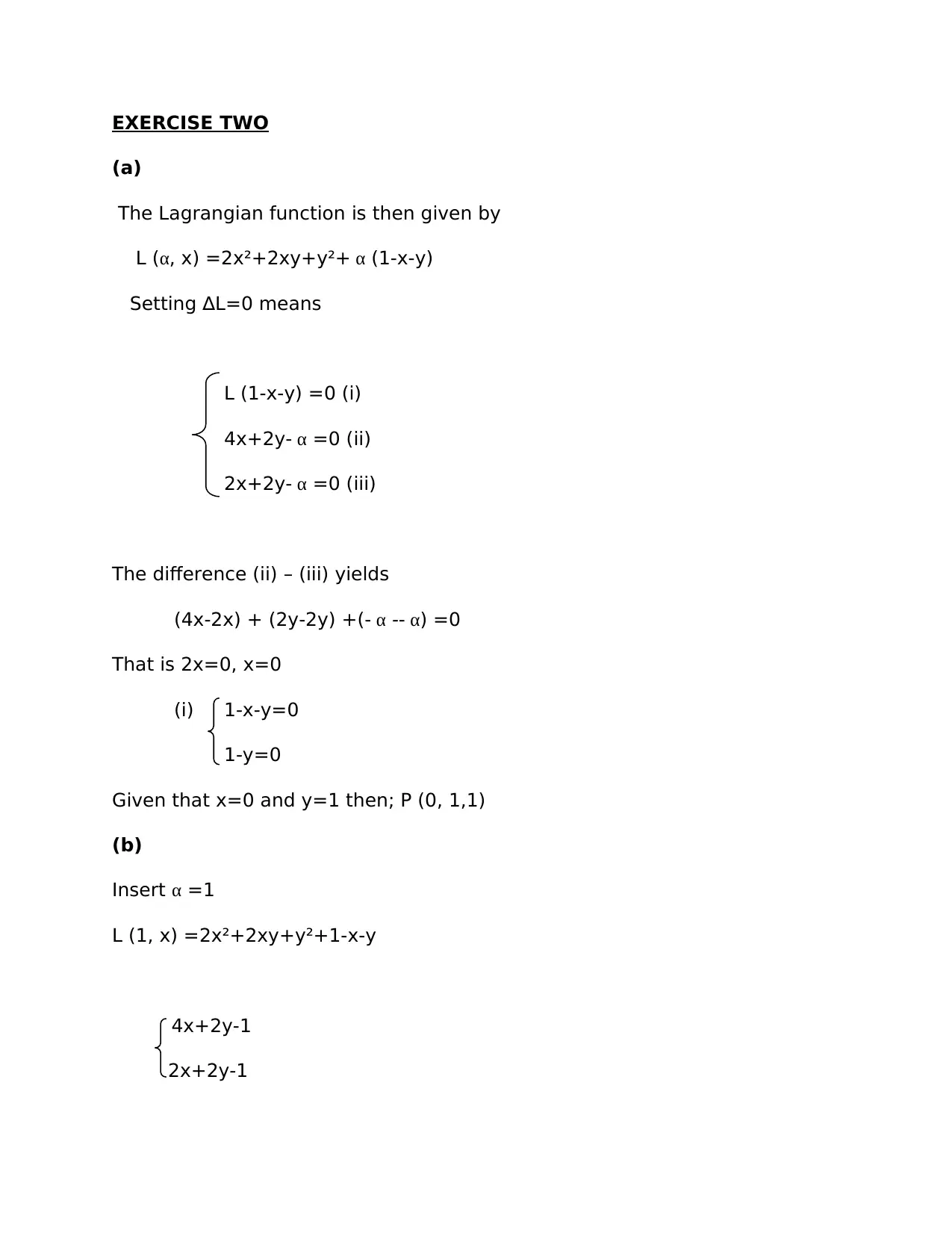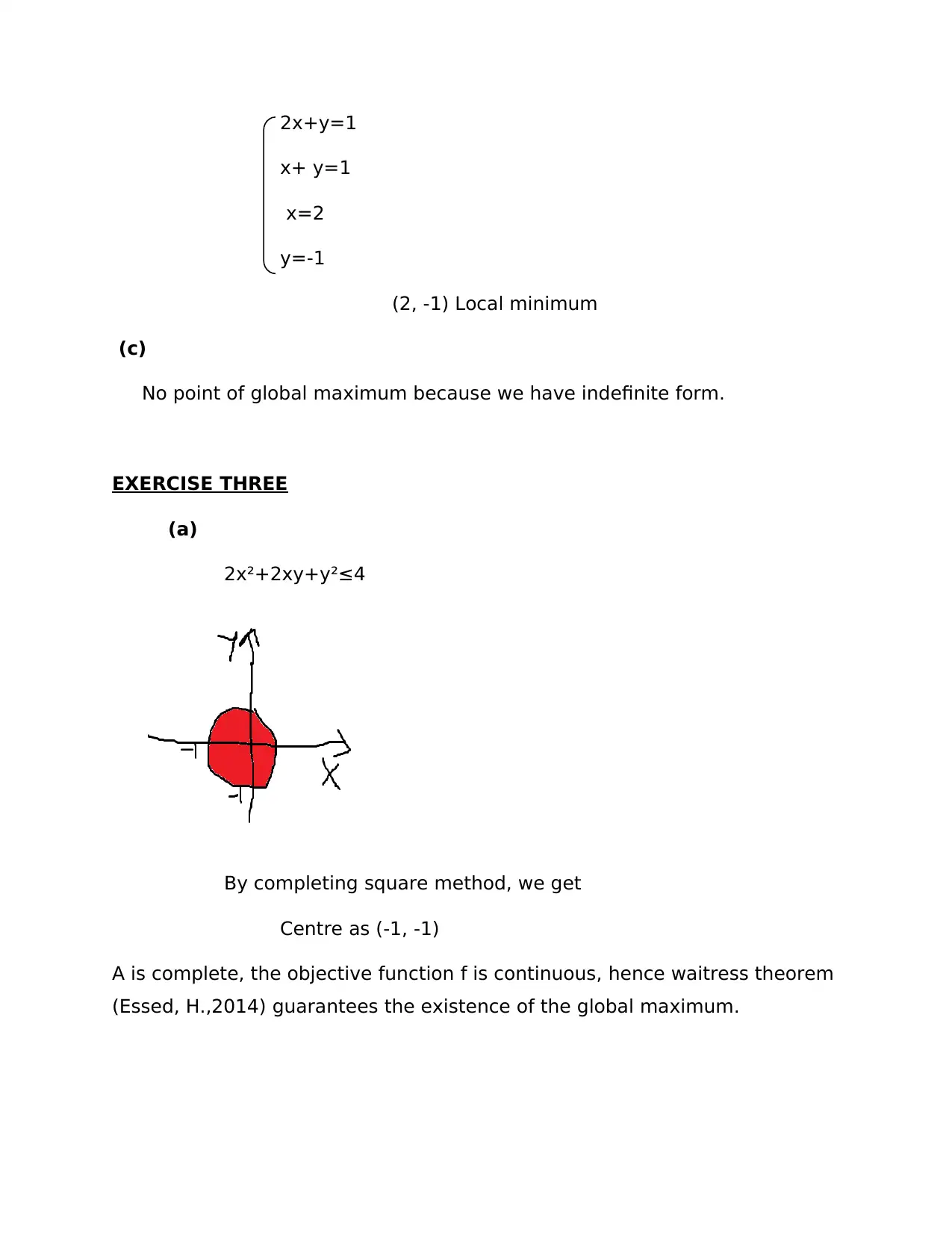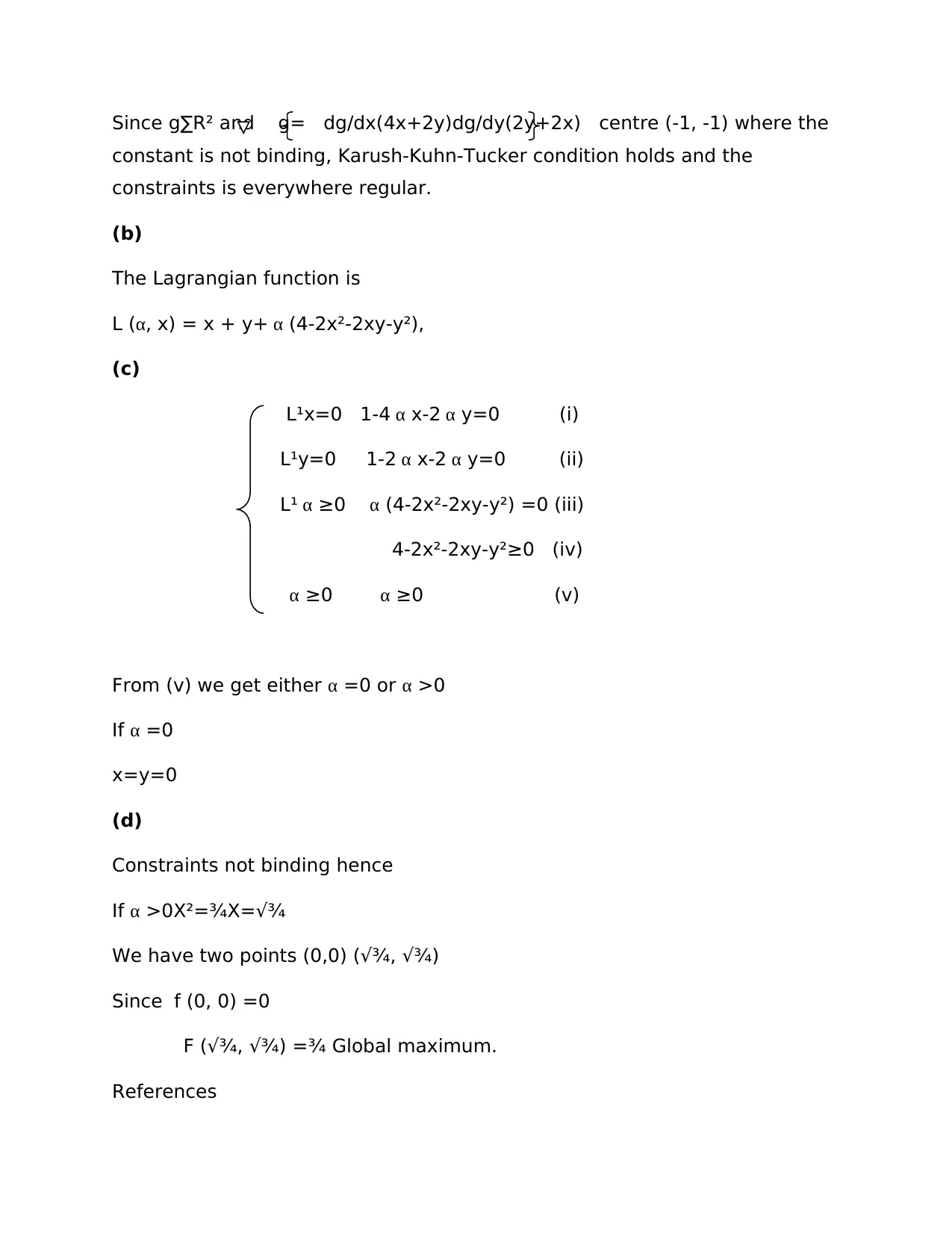Optimization Problems Solution: Mathematics Module 2, AY 2019-2020
VerifiedAdded on 2022/09/23
|5
|506
|20
Homework Assignment
AI Summary
This document contains the solutions to three exercises related to optimization problems. Exercise 1 explores finding stationary points, Hessian matrices, and determining whether a point is a minimum, maximum, or neither. Exercise 2 focuses on optimization with constraints, involving the Lagrangian function and identifying minimum points. Exercise 3 delves into optimization problems with inequality constraints, utilizing the Weierstrass theorem, Kuhn-Tucker conditions, and finding global maximums. The solutions provide detailed steps, explanations, and analysis of the mathematical concepts involved, including the application of theorems and conditions to solve the given optimization scenarios.
1 out of 5












![[object Object]](/_next/static/media/star-bottom.7253800d.svg)